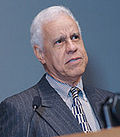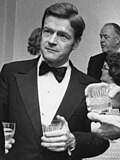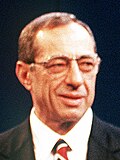| Date (daily totals) | Contest
and total popular vote | Awarded
pledged delegates | Delegates won and popular vote |
|---|
Bill
Clinton | Jerry
Brown | Paul
Tsongas | Tom
Harkin | Bob
Kerrey | Others | Uncommitted |
|---|
| | | | | | |
|---|
| February 10 | Iowa
Caucuses
2,996 CDs | 0 of (49) | 76 CDs (2.81%) | 51 CDs (1.60%) | 128 CDs (4.11%) | 2,314 CDs (76.55%) | 72 CDs (2.41%) | - | 355 CDs (11.85%) |
| February 18 | New Hampshire
Primary
167,664 | 18 of (18) | 9 Del.
41,540 (24.78%) |
13,659 (8.15%) | 9 Del.
55,663 (33.20%) |
17,063 (10.18%) |
18,584 (11.08%) |
21,155 (12.62%) | - |
| February 22 | Maine
Caucuses [33] [34]
3,368 SDs | 0 of (24) | 501 SDs (14.88%) | 1,026 SDs (30.46%) | 970 SDs (28.80%) | 174 SDs (5.17%) [d] | 105 SDs (3.12%) [d] | - | 548 SDs (16.27%) |
| February 25 | South Dakota
Primary [35]
59,794 | 15 of (15) | 3 Del.
11,421 (19.10%) |
2,304 (3.86%) |
5,756 (9.62%) | 5 Del.
15,153 (25.23%) | 7 Del.
23,974 (40.12%) |
1,238 (2.07%) | - |
March 3
(380) | Colorado
Primary [36]
239,643 | 47 of (47) | 14 Del.
64,470 (26.90%) | 18 Del.
69,073 (28.82%) | 15 Del.
61,360 (25.61%) |
5,866 (2.45%) |
29,572 (12.34%) |
3,946 (1.65%) |
5,356 (2.24%) |
Georgia
Primary [36] [37]
454,631 | 76 of (76) | 54 Del.
259,907 (57.17%) |
36,808 (8.10%) | 22 Del.
109,148 (24.01%) |
9,479 (2.09%) |
22,033 (4.85%) | - |
17,256 (3.80%) |
Idaho
Caucuses [38]
372 SDs | 0 of (18) | 43 SDs (11.56%) | 17 SDs (4.57%) | 107 SDs (28.76%) | 110 SDs (29.57%) | 30 SDs (8.06%) | - | 65 SDs (17.47%) |
Maryland
Primary [37]
531,068 | 67 of (67) | 29 Del.
189,905 (35.76%) |
46,480 (8.75%) | 38 Del.
230,490 (43.40%) |
32,899 (6.20%) |
27,035 (5.09%) |
4,259 (0.80) | - |
Minnesota
Caucuses [37] | 0 of (92) | (10.3%) | (8.2%) | (19.2%) | (26.7%) | (7.6%) | - | (24.3%) |
Utah
Caucuses [37]
31,429 | 23 of (23) | 5 Del.
5,763 (18.34%) | 9 Del.
8,972 (28.55%) | 9 Del.
10,761 (34.24%) |
1,267 (4.03%) |
3,442 (10.95%) |
598 (1.90%) |
726 (2.31%) |
Washington
Caucuses [39]
? CDs [e] | 0 of (72) | 835 CDs (15.9%) | 1,019 CDs (19.1%) | 1,485 CDs (27.9%) | 397 CDs (7.5%) | 221 CDs (4.1%) | - | 1,293 SDs (24.3%) |
American Samoa
Caucuses [40]
31,429 | 3 of (3) | (9%) | - | - | - | - | (4%) | 3 Del.
(87%) |
| March 7 | Arizona
Caucuses [41]
36,727 | 41 of (41) | 15 Del.
10,607 (29.28%) | 12 Del.
10,145 (27.62%) | 14 Del.
12,663 (34.48%) |
2,831 (7.71%) | - | - |
334 (0.91%) |
South Carolina
Primary [41]
116,414 | 43 of (43) | 36 Del.
73,221 (62.90%) |
6,961 (5.98%) | 7 Del.
21,338 (18.33%) |
7,657 (6.58%) |
566 (0.49%) | - | - |
Wyoming
Caucuses [41] [42]
274 SDs | 0 of (11) | 78 SDs (28.57%) | 63 SDs (23.08%) | 32 SDs (11.72%) | 39 SDs (14.29%) | – | 1 SD (0.36%) | 61 SDs (22.26%) |
| March 8 | Nevada
Caucuses [43]
1,546 CDs [f] | 0 of (17) | 400 CDs (25.87%) | 542 CDs (35.06%) | 305 CDs (19.73%) | 16 CDs (1.03%) | 6 CDs (0.39%) | 6 CDs (0.39%) | 266 CDs (17.21%) |
March 10
(Super Tuesday)
(777) | Delaware
Caucuses [44] [45]
318 SDs
2,503 | 0 of (14) | 66 SDs (20.75%)
520 (20.78%) | 62 SDs (17.47%)
488 (19.50%) | 96 SDs (30.19%)
755 (30.16%) | – | – | - | 94 SDs (29.56%)
740 (29.56%) |
Florida
Primary [46]
1,092,448 | 148 of (148) | 87 Del.
554,861 (50.79%) | 3 Del.
133,156 (12.19%) | 58 Del.
379,572 (34.75%) |
13,302 (1.22%) |
11,557 (1.06%) | - | - |
Hawaii
Caucuses [47]
2,966 | 0 of (20) | 1,501 (50.61%) | 409 (13.79%) | 421 (14.19%) | 406 (13.69%) | 13 (0.44%) | - | 216 (7.28%) |
Louisiana
Primary [48]
384,426 | 60 of (60) | 59 Del.
267,029 (69.46%) |
25,480 (6.63%) | 1 Del.
42,509 (11.06%) |
4,033 (1.05%) |
2,984 (0.78%) |
42,391 (11.03%) | - |
Massachusetts
Primary [49]
794,115 | 94 of (94) |
86,817 (10.95%) | 6 Del.
115,746 (14.60%) | 88 Del.
526,297 (66.38%) |
3,764 (0.48%) |
5,409 (0.68%) |
12,218 (1.54%) |
43,864 (5.52%) |
Mississippi
Primary [49]
191,200 | 39 of (39) | 39 Del.
139,893 (73.11%) |
18,396 (9.61%) |
15,538 (8.12%) |
2,509 (1.31%) |
1,660 (0.87%) |
1,394 (0.73%) |
11,807 (6.18%) |
Missouri
Caucuses [50]
963 DDs [g]
22,500 | 0 of (92) | 434 DDs (45.07%)
10,148 (45.10%) | 55 DDs (5.71%)
1,282 (5.70%) | 98 DDs (10.18%)
2,295 (10.20%) | – | – | - | 376 DDs (39.04%)
8,775 (39.00%) |
Oklahoma
Primary [49]
416,129 | 45 of (45) | 38 Del.
293,266 (70.47%) | 7 Del.
69,624 (16.69%) | – |
14,015 (3.40%) |
13,252 (3.20%) |
25,972 (3.20%) | - |
Rhode Island
Primary [49]
50,402 | 22 of (22) | 6 Del.
10,762 (21.22%) | 3 Del.
9,541 (18.82%) | 13 Del.
26,825 (52.90%) |
319 (0.63%) |
469 (0.92%) |
1,783 (3.54%) |
703 (1.39%) |
Tennessee
Primary [49]
318,482 | 68 of (68) | 56 Del.
214,485 (67.35%) |
25,560 (8.02%) | 12 Del.
61,717 (19.38%) |
2,099 (0.66%) |
1,638 (0.51%) |
432 (0.14%) |
12,551 (3.94%) |
Texas
Primary [49]
1,483,047 | 196 of (196) | 94 Del.
972,235 (65.56%) | 2 Del.
118,869 (8.02%) | 31 Del.
285,224 (19.23%) |
19,618 (1.32%) |
20,298 (1.37%) |
66,803 (4.50%) | - |
| March 17 (295) | Illinois
Primary [51]
1,504,130 | 164 of (164) | 107 Del.
776,829 (51.65%) | 11 Del.
220,346 (14.65%) | 46 Del.
387,891 (25.79%) |
30,710 (2.04%) |
10,916 (0.73%) |
9,826 (0.65%) |
67,612 (4.50%) |
Michigan
Primary [51]
585,972 | 131 of (131) | 74 Del.
297,280 (50.73%) | 37 Del.
151,400 (25.84%) | 20 Del.
97,017 (16.56%) |
6,265 (1.07%) |
3,219 (0.55%) |
2,955 (0.50%) |
27,836 (4.75%) |
| March 19 | Democrats Abroad
Caucuses [52] | ? | ?
(27.00%) | – | ?
(37.00%) |
(7.00%) | – | - | - |
North Dakota
Caucuses [53]
974 | 0 of (14) | 448 (46.00%) | 73 (7.49%) | 100 (10.27%) | 66 (6.78%) | 12 (1.23%) | 23 (2.36%) | 252 (25.87%) |
| March 24 | Connecticut
Primary [54]
173,119 | 53 of (53) | 22 Del.
61,698 (35.64%) | 21 Del.
64,472 (37.24%) | 10 Del.
33,811 (19.53%) |
1,919 (1.11%) |
1,169 (0.68%) |
4,620 (2.67%) |
5,430 (3.14%) |
| March 28 | Iowa
County Conventions [55]
2,998 CDs | 0 of (49) | 347 CDs (11.57%) | 280 CDs (9.34%) | - | 1,105 CDs (36.86%) | - | 32 CDs (1.08%) | 1,234 CDs (41.16%) |
Virgin Islands
Caucuses [56]
31,429 | 3 of (3) | 1 Del.
(42%) | - | - | - | - | (4%) | 2 Del.
(58%) |
| March 31 | Vermont
Caucus [57]
1,209 SDs [h] | 0 of (15) | 208 SDs (17.20%) | 573 SDs (47.40%) | 117 SDs (9.68%) | – | – | - | 311 SDs (25.72%) |
| April 2 | Alaska
Caucus [58]
2,907 DDs [i] | 0 of (13) | 884 DDs (30.41%) | 964 DDs (33.16%) | - | – | – | - | 1,059 DDs (36.43%) |
| April 5 | North Dakota
State Convention [59] | 14 of (14) | 3 Del. | - | - | - | - | - | 9 Del. |
Puerto Rico
Primary [60]
64,962 | 51 of (51) | 51 Del.
62,273 (95.86%) |
921 (1.42%) |
59 (0.09%) |
31 (0.05%) |
930 (1.43%) |
504 (0.78%) |
244 (0.38%) |
| April 7 | Kansas
Primary [61]
160,251 | 36 of (36) | 27 Del.
82,145 (51.26%) | 2 Del.
20,811 (12.99%) | 6 Del.
24,413 (15.23%) |
940 (0.59%) |
2,215 (1.38%) |
2,215 (1.38%) | 1 Del.
22,159 (13.83%) |
Minnesota
Primary [62]
204,402 | 0 of (92) | 63,584 (31.14%) | 62,474 (30.60%) | 43,588 (21.35%) | 4,077 (2.00%) | 1,191 (0.58%) | 17,890 (8.75%) | 11,366 (5.56%) |
New York
Primary [63]
1,007,726 | 244 of (244) | 102 Del.
412,349 (40.92%) | 67 Del.
264,278 (26.23%) | 75 Del.
288,330 (28.61%) |
11,535 (1.15%) |
11,147 (1.11%) |
20,087 (1.99%) | - |
Wisconsin
Primary [64] [65]
772,597 | 82 of (82) | 34 Del.
287,356 (37.19%) | 29 Del.
266,207 (34.46%) | 19 Del.
168,619 (21.83%) |
5,395 (0.70%) |
3,044 (0.39%) |
3,044 (3.43%) |
26,489 (2.00%) |
| April 11 | Nevada
County Conventions [66]
271 SDs [j] | 0 of (17) | 87 SDs (32.10%) | 114 SDs (42.07%) | 40 SDs (30.19%) | – | – | - | 30 SDs (29.56%) |
Virginia
Caucuses [67] | 0 of (78) | (52.00%) | (12.00%) | – | – | – | – | (36.00%) |
| April 14 | Missouri
District Conventions [k] [68] | 50 of (92) | 24 Del. | 2 Del. | 3 Del. | - | - | - | 21 Del. |
| April 25 | Delaware
State Convention [69] | 15 of (15) | 3 Del. | 3 Del. | 4 Del. | - | - | - | 5 Del. |
Missouri
District Conventions [l] [70] | 25 of (92) | 10 Del. | - | - | - | - | - | 15 Del. |
Washington
County Conventions [71] [72]
2,003 DDs | 0 of (72) | 533 DDs (26.61%) | 476 DDs (23.76%) | 432 DDs (21.57%) | - | - | 1 DDs (0.05%) | 561 DDs (28.01%) |
| April 28 | Pennsylvania
Primary [73]
1,265,495 [m] | 169 of (169) | 112 Del.
715,031 (56.48%) | 50 Del.
325,543 (25.72%) | 7 Del.
161,572 (12.76%) |
21,013 (1.66%) |
20,802 (1.64%) |
21,534 (1.70%) | - |
| May 2 | Iowa
District Conventions [74] | 32 of (49) | 4 Del. | 1 Del. | - | 17 Del. | - | - | 10 Del. |
Missouri
State Convention [75] | 17 of (92) | 9 Del. | 1 Del. | 2 Del. | - | - | - | 5 Del. |
Nevada
State Convention [76] | 17 of (17) | 8 Del. | 6 Del. | - | - | - | - | 3 Del. |
Wyoming
State Convention [77] | 11 of (11) | 5 Del. | 3 Del. | - | - | - | - | 3 Del. |
| May 3 | Guam
Caucuses [78]
1,020 | 3 of (3) | 1 Del.
500 (49%) |
204 (20%) | - | - | - | - | 2 Del.
316 (31%) |
| May 5 | Indiana
Primary [79]
476,849 | 77 of (77) | 57 Del.
301,905 (63.31%) | 20 Del.
102,379 (21.47%) |
58,215 (12.21%) | – |
14,350 (3.01%) | – | – |
North Carolina
Primary [79]
691,866 | 84 of (84) | 72 Del.
443,498 (54.10%) |
71,984 (10.40%) |
57,589 (8.32%) |
5,891 (0.85%) |
6,216 (0.90%) | - | 12 Del.
106,697 (15.42%) |
Washington D.C.
Primary [79]
61,842 | 17 of (17) | 17 Del.
45,685 (73.87%) |
57,589 (7.21%) |
71,984 (10.41%) | – | – | – |
5,262 (8.51%) |
| May 9 | Minnesota
District Conventions [n] [80] | 63 of (92) | 10 Del. | 4 Del. | - | - | - | - | 49 Del. |
| May 12 | Nebraska
Primary [81]
150,587 | 25 of (25) | 13 Del.
68,562 (45.53%) | 8 Del.
31,673 (21.03%) |
10,707 (7.11%) |
4,239 (2.82%) | – |
10,692 (7.10%) | 4 Del.
24,714 (16.41%) |
West Virginia
Primary [81]
317,587 | 31 of (31) | 31 Del.
227,815 (74.24%) |
36,505 (11.90%) |
21,271 (6.93%) |
2,774 (0.90%) |
3,152 (1.03%) |
15,349 (4.83%) |
10,721 (3.38%) |
| May 16 | Vermont
State Convention [82] | 15 of (15) | 3 Del. | 6 Del. | - | - | - | - | 6 Del. |
| May 17 | Maine
State Convention [83] | 24 of (24) | 6 Del. | 10 Del. | 5 Del. | - | - | - | 3 Del. |
| May 19 | Oregon
Primary [84]
354,332 | 47 of (47) | 29 Del.
159,802 (45.10%) | 18 Del.
110,494 (31.18%) |
37,139 (10.48%) | – | – |
46,897 (13.24%) | – |
Washington
Primary [84]
147,981 | 0 of (72) | 62,171 (42.01%) | 34,111 (23.05%) | 18,981 (12.83%) | 1,858 (1.26%) | 1,489 (1.01%) | 29,371 (19.85%) | - |
| May 26 | Arkansas
Primary [85]
506,679 | 36 of (36) | 30 Del.
344,758 (68.04%) |
55,800 (11.01%) | – | – | – |
14,719 (2.90%) | 6 Del.
91,402 (18.04%) |
Idaho
Primary
Primary [85]
55,124 | 0 of (18) | 27,004 (48.99%) | 9,212 (16.71%) | – | – | – | 2,879 (5.22%) | 16,029 (29.08%) |
Kentucky
Primary
Primary [85]
370,578 | 52 of (52) | 34 Del.
207,804 (56.08%) | 30,709 (8.29%) | 18,097 (4.88%) | 7,136 (1.93%) | 3,242 (0.87%) | - | 18 Del.
103,590 (27.95%) |
| May 30 | Washington
District Conventions [86] | 46 of (72) | 15 Del. | 10 Del. | 9 Del. | - | - | - | 12 Del. |
| May 31 | Alaska
State Convention [87] | 14 of (14) | 5 Del. | - | - | - | - | - | 8 Del. |
Hawaii
State Convention [88] [o] | 20 of (20) | 16 Del. | 2 Del. | - | 2 Del. | - | - | - |
| June 2 | Alabama
Primary [89]
450,899 | 55 of (55) | 43 Del.
307,621 (68.22%) |
30,626 (6.79%) | – | – | – |
18,097 (4.83%) | 12 Del.
90,863 (20.15%) |
California
Primary [90]
2,863,419 | 348 of (348) | 191 Del.
1,359,112 (47.47%) | 157 Del.
1,150,460 (40.18%) |
212,522 (7.42%) | – |
33,935 (1.19%) |
107,390 (3.75%) | – |
Montana
Primary [89]
117,471 | 16 of (16) | 8 Del.
54,989 (46.81%) | 3 Del.
21,704 (18.48%) |
12,614 (10.74%) | – | – | – | 5 Del.
28,164 (23.98%) |
New Jersey
Primary [91]
405,222 | 105 of (105) | 73 Del.
256,337 (63.26%) | 26 Del.
79,877 (19.71%) |
45,191 (11.15%) | – | – | 2 Del.
23,817 (5.88%) | – |
New Mexico
Primary [89]
181,443 | 25 of (25) | 17 Del.
95,933 (52.87%) | 3 Del.
30,705 (16.92%) |
11,315 (6.24%) |
3,233 (1.78%) | – |
4,988 (2.75%) | 5 Del.
35,269 (19.44%) |
Ohio
Primary [89]
1,042,235 | 151 of (151) | 113 Del.
638,347 (61.25%) | 34 Del.
197,449 (18.94%) | 1 Del.
110,673 (10.62%) |
25,395 (2.44%) |
22,976 (2.20%) | 3 Del. [p]
47,395 (4.55%) | - |
| June 6 | Minnesota
State Convention [92] | 29 of (92) | 7 Del. | 3 Del. | - | - | - | 1 Del. [q] | 18 Del. |
Virginia
State Convention [r] [93] | 78 of (78) | 58 Del. | 3 Del. | - | - | - | - | 17 Del. |
| June 7 | Washington
State Convention [94] | 26 of (72) | 8 Del. | 6 Del. | 5 Del. | - | - | - | 7 Del. |
| June 9 | North Dakota
Primary [89]
32,786 | 0 of (14) | 4,760 (14.52%) | – | – | – | – | 28,026 (85.48%) [s] | – |
| June 20 | Idaho
State Convention [95] | 18 of (18) | 4 Del. | - | 4 Del. | 5 Del. | - | - | 5 Del. |
| June 21 | Iowa
State Convention [96] | 17 of (49) | 3 Del. | - | - | 9 Del. | - | - | 5 Del. |
Total pledged delegates
(3,517) [t] [97] | 1,997 (56.78%) | 588 (16.72%) | 533 (15.15%) | 38 (1.08%) | 7 (0.20%) | 6 (0.17%) | 271 (7.71%) |
|---|



































